Early crankcase design flaw
The crank and cases were largely unchanged during the long run of the 89cc Honda engine, the main change being to the kick-starter. I got to learn about these changes first hand when working on by CT90 which - although it is a 1969 model – came with an engine is from a late K0 model, dating from between 1967 and 1968.
The original kick-starter design fitted to the earlier 90 engines used a permanently engaged pinion gear that was turned by a ratchet and pawl assembly:

The main weakness with this design is that it incorporated an cast aluminium 'stop' inside the right-hand crankcase - intended to prevent the ratchet mechanism from over-rotating and contacting the transmission - which can break off, with predictable results.
The case in my engine shows signs of this type of damage, although someone has attempted a repair in the past (see the picture in the centre, below).
As explained in the 1965 service bulletin below, if the broken off part gets loose in the engine then the damage can be severe.


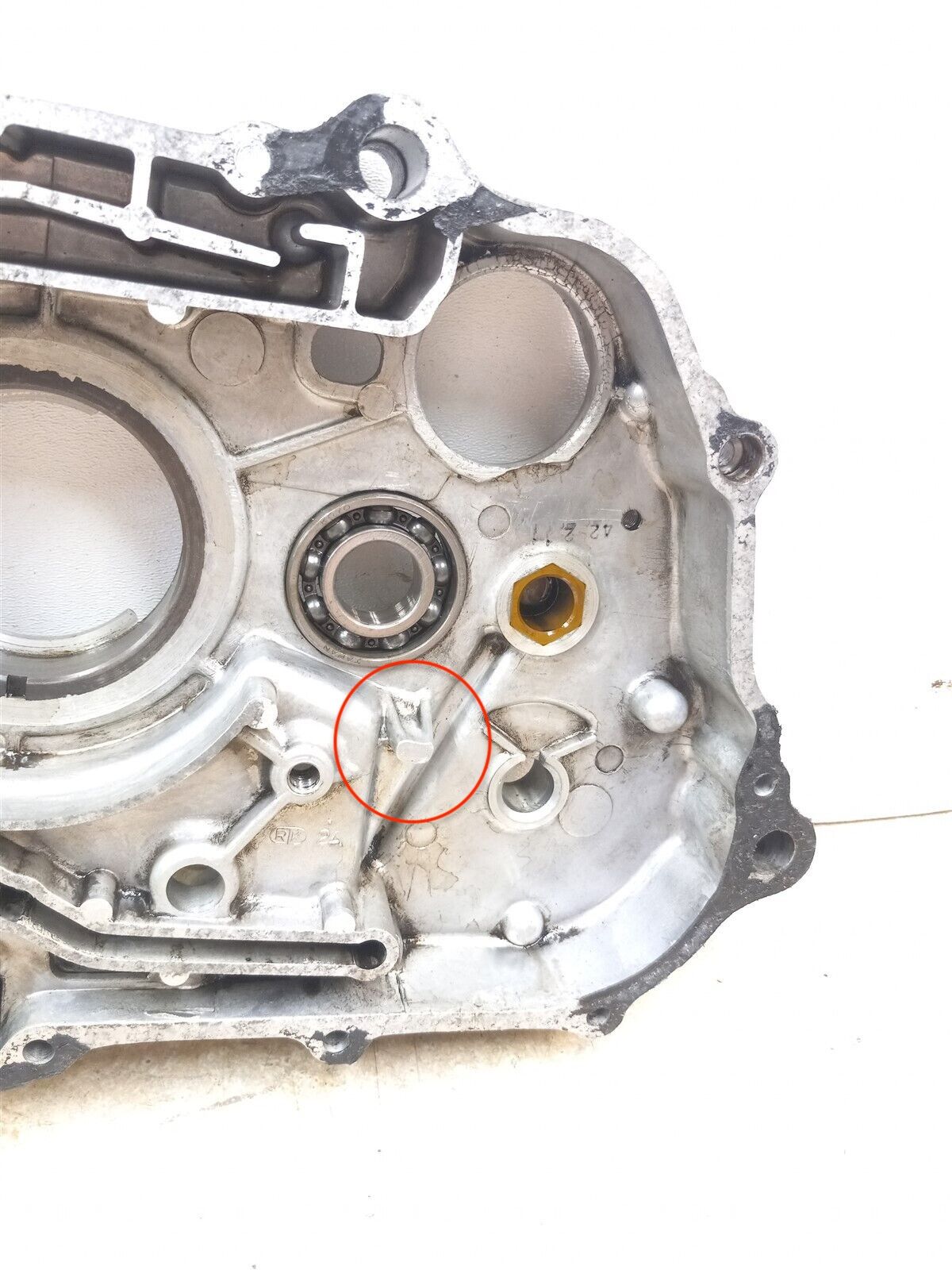
left: service bulletin / middle: tell-tale damage (repaired) / right: unbroken kickstarter stop
If you have an older engine, note the guidance above (left) about how to locate the kick starter to prevent the ratchet colliding with the kickstarter stop.
New crankcase design
In the late 60s Honda introduced a new kick-starter mechanism that removed the need for an internal stop inside the case:


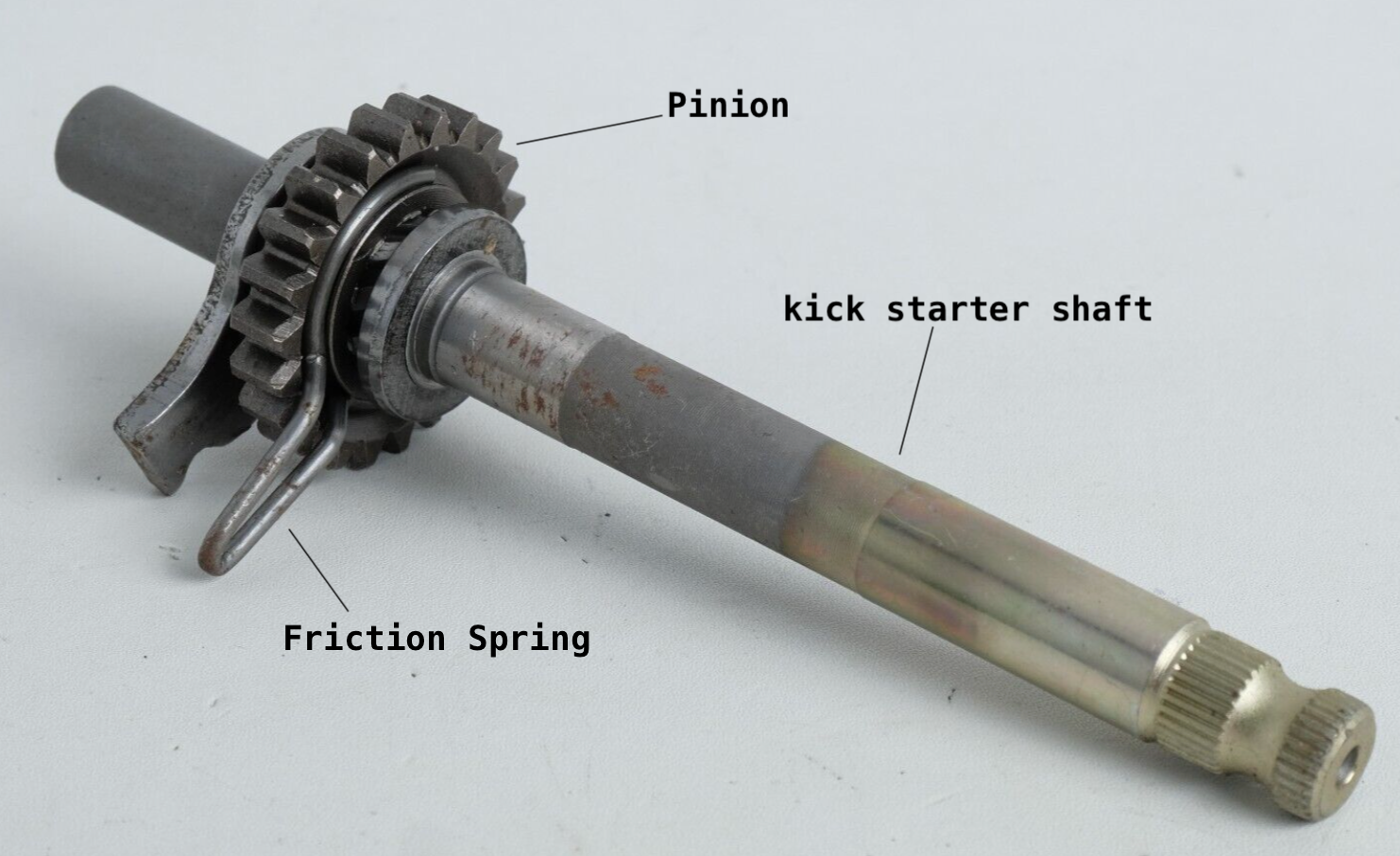
new type kick start mechanism - The kickstart pinion gear fits over helical grooves in the end of the kick starter shaft. A friction spring is fitted into a groove in the back of the pinion gear, and located into a notch in the case to stop it rotating. When the kick starter lever is depressed the drag created by the friction spring causes the gear to move up the helical thread toward the transmission where it meshes with the countershaft low gear.
Surprisingly, David Silvers still had stock of the old crankcases and since I was not sure on which part numbers applied to the early engine I ordered a couple of the cases that purported to fit the early CT90s.
One of the cases had been mislabelled and was is designed to work with the later sliding pinion kick starter.
The second case, which was intended for the earlier ratchet style kickstarter, turned out to be the newer style case with various bits machined off to accommodate the older style mechanism (see below). Honda had made no attempt to reinstate the kickstart stop, but I'm not sure if that was just a case of penny pinching or that by this point they had concluded the cure was worse than the disease. Here are the cases side-by-side for comparison:
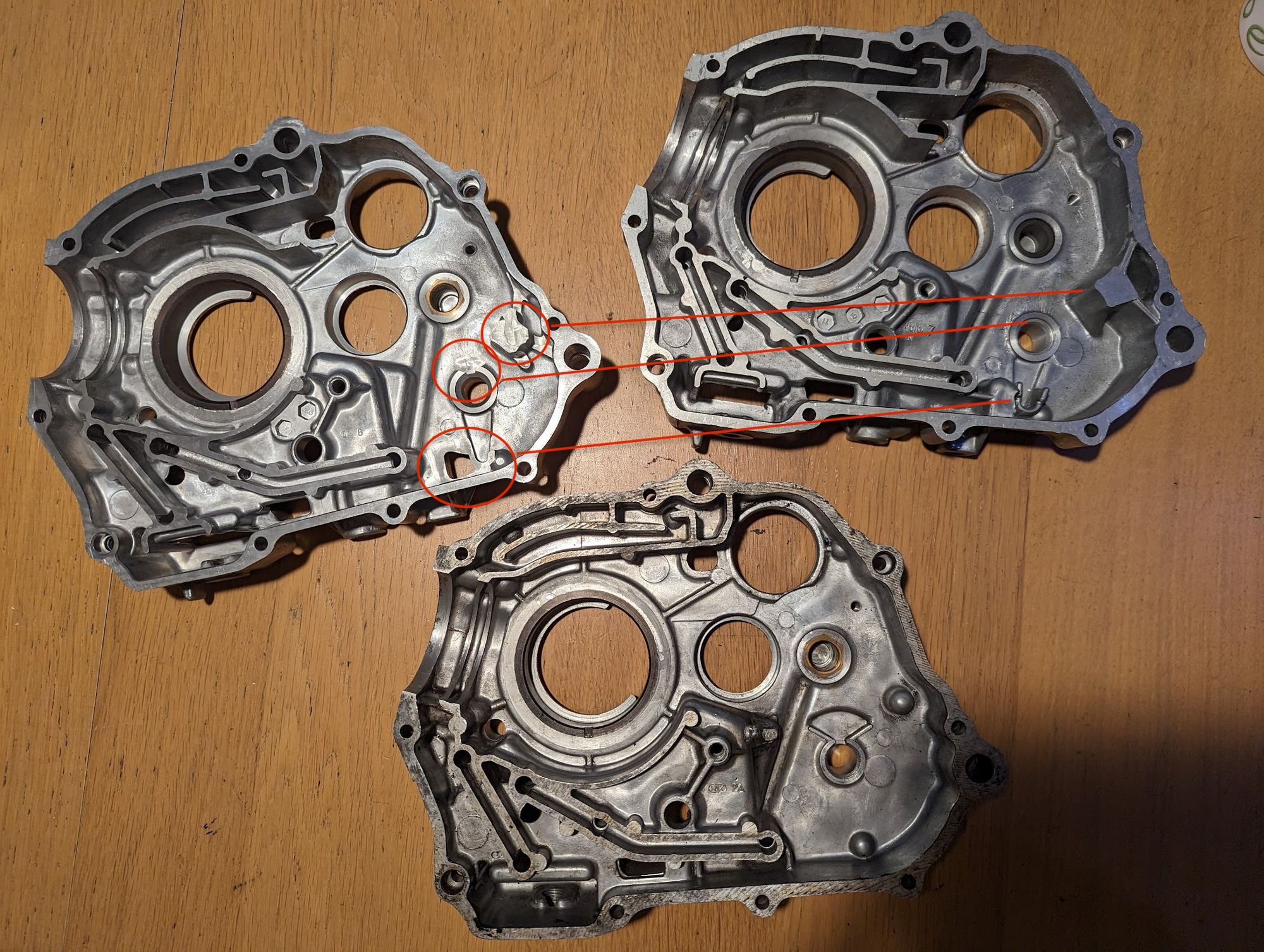
Looking more closely, the kick-start stop seems to have been a bit of a white elephant, since - if unobstructed by the stop - the kick starter would still have to rotate an improbably long way to reach the gears. Admittedly if it did rotate this far then the small spring that keeps the ratchet against the starter gear would get knocked off and you have to open up the engine case to fix it - a major annoyance. By comparison, the kick start leaver only needs to rotate 180 degrees (easily done if it is installed vertically) for the ratchet to hit the stop, with potentially far more serious consequences.
It turned out the replacement (modified) RHS crank case does not fit the cylinder. I had not noticed until getting to the point of fitting the piston, but the opening for the cylinder is a couple of millimetres smaller than the original.
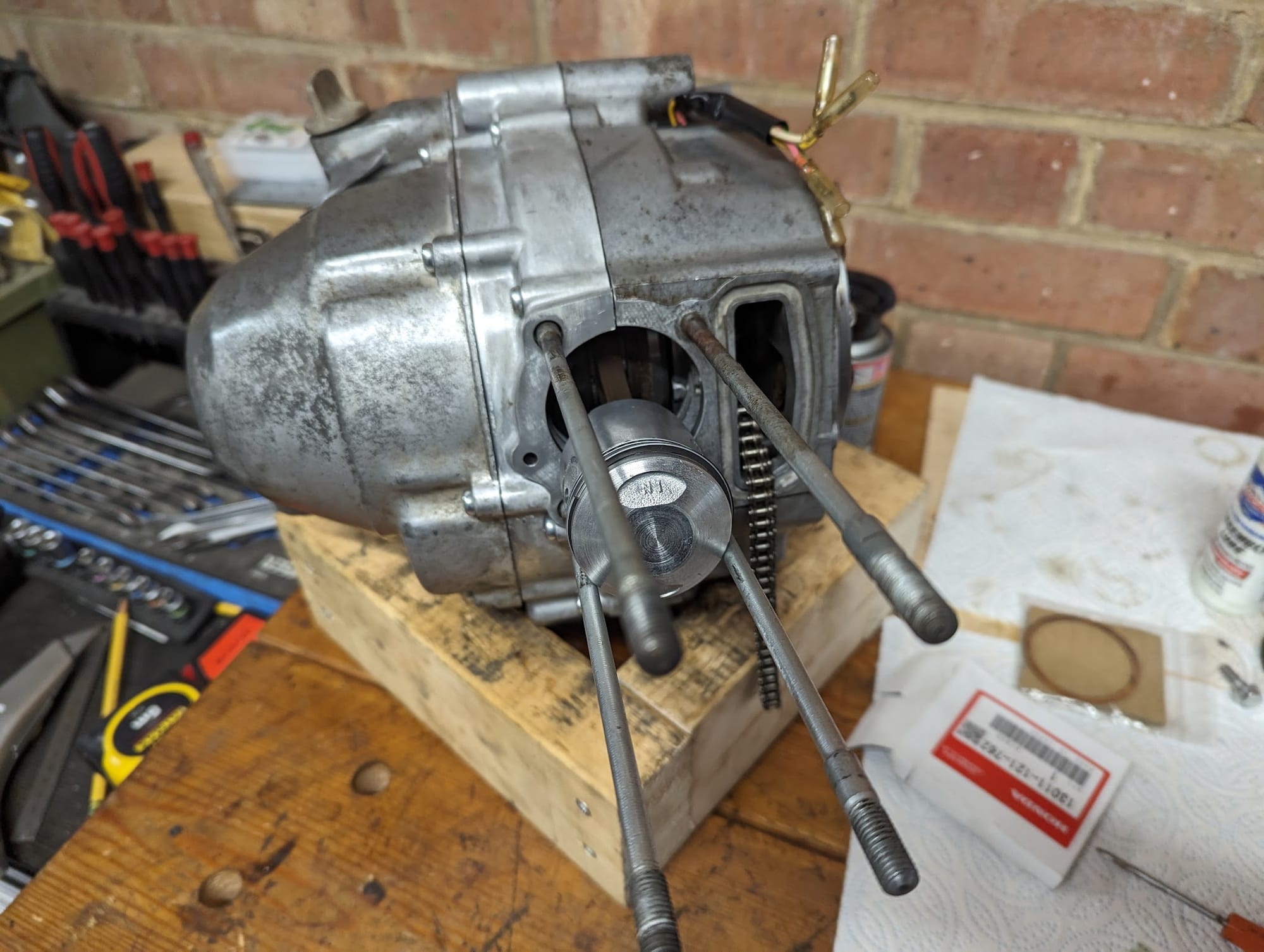
One possible explanation is that the case was intended for the S90 models fitted with thinner alloy cylinders, but at this distance of time it is hard to be sure. Anyhow I ended up fitting the original repaired case and returning the two I ordered from David Silver.
crankcase breathers
The reciprocating motion of the piston combined with any blow-by of combustion products that pass the piston rings causes the interior of the crank case to be under continuously varying pressure. The pressure is relieved through two crank-case breathers.
The hot gasses pass through a baffle in the right hand crank case and enter the left hand side of the case via the vent shown at (A) below. The gases are then routed thought the left crank case cover and are discharged above the drive train (B).
Honda modified the left hand crank case design in the 1960s, adding a secondary breaker (C) lower in the case - this discharges behind the chain guard.
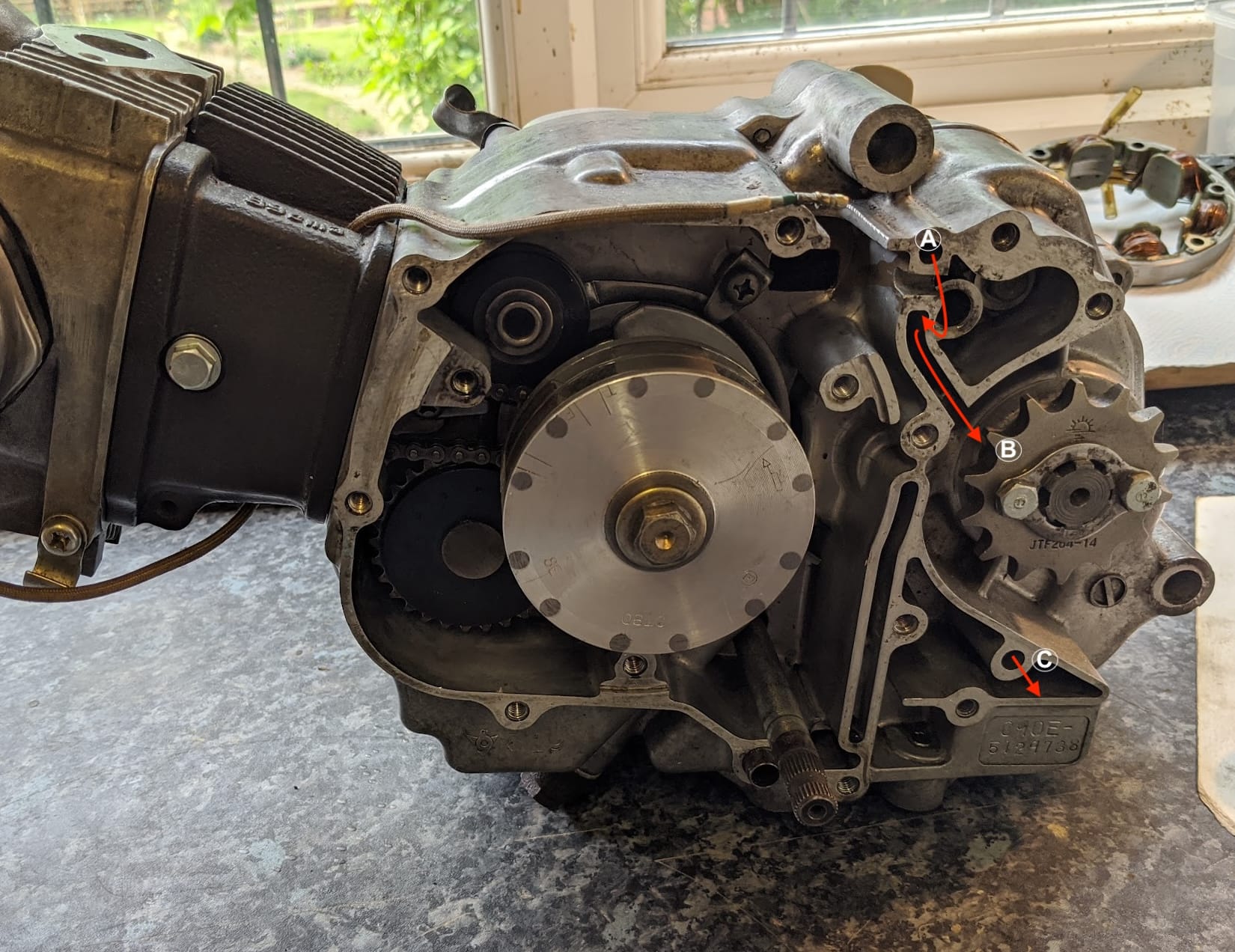
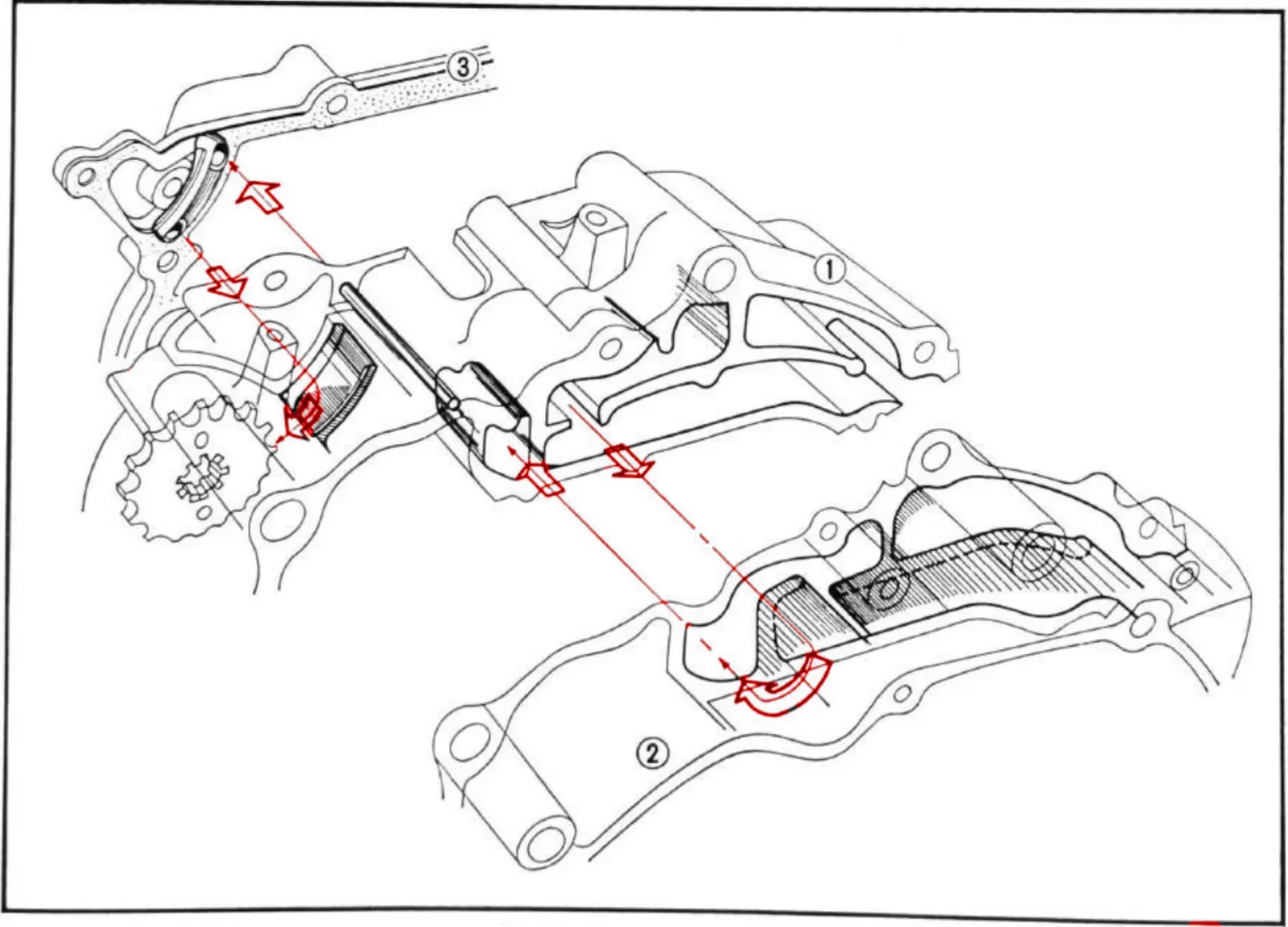
left: primary and secondary crankcase breathers / right: the route the gasses take in the primary breather system
Earlier engines did not have the secondary breather:
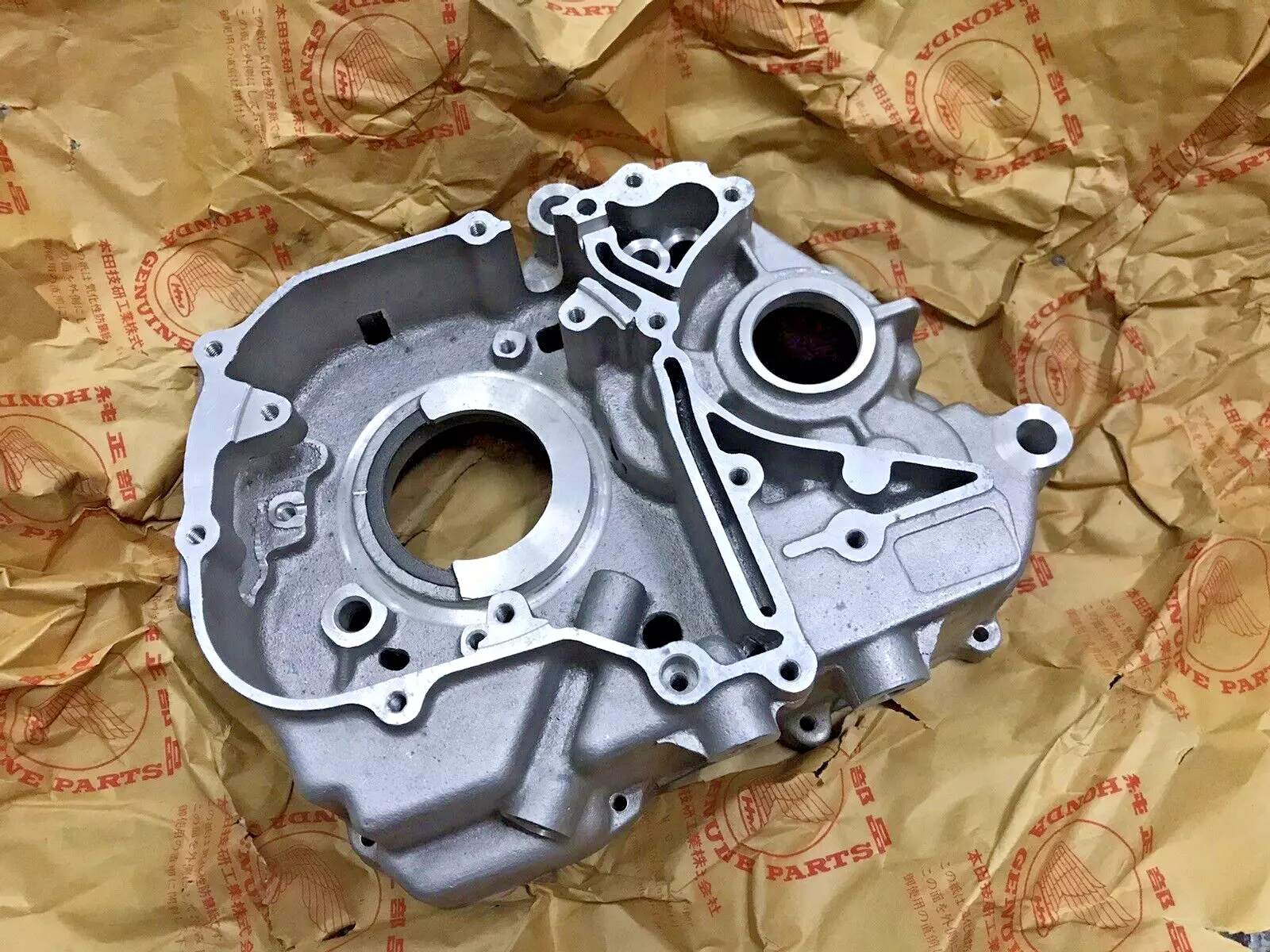
Crank
The cranks fitted to the 89cc engines all appear to be interchangeable. I did read somewhere that the s90 cranks have a different taper on the crank shaft, but I've had a couple (possibly mislabeled) S90 cranks from ebay and they have been identical to the C90/CT90 versions. The big end bearings in the crank on this engine were a bit graunchy so I replaced the connecting rod, pin and big end bearing with replacements from Toko Japan - one of the original manufacturers working for Honda- and also replaced the Naichi main bearings. You can read about the procedure here
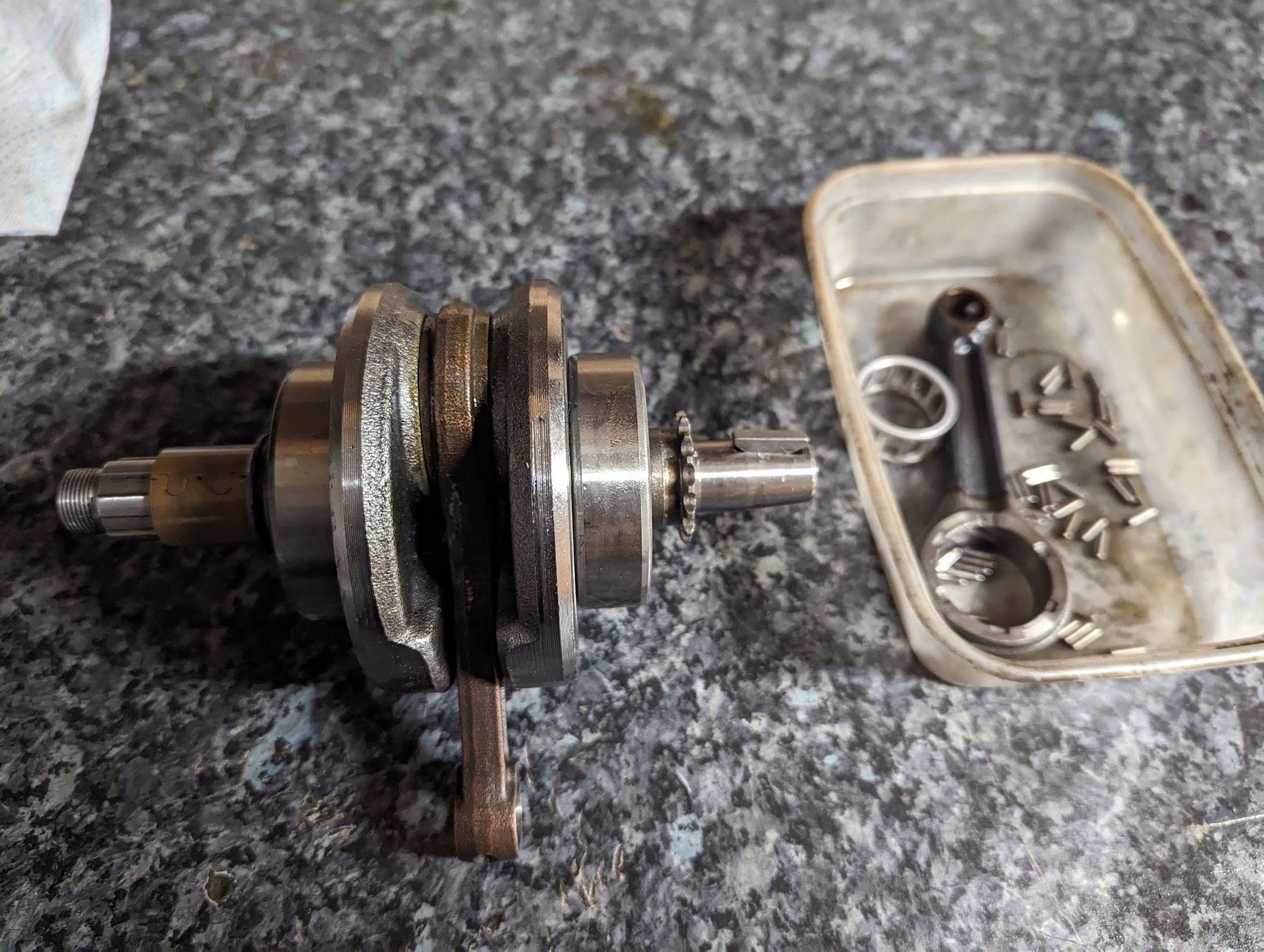
Crankcase gaskets
Make sure to get the CT90-specific gasket that goes between the left crankcase and the alternator cover. The section of the gasket highlighted in red in the picture (below left) covers the oil return from the sub transmission - if you fit the C90/S90 gasket you will get a leak from under the posi-torque (hi-lo) transmission.
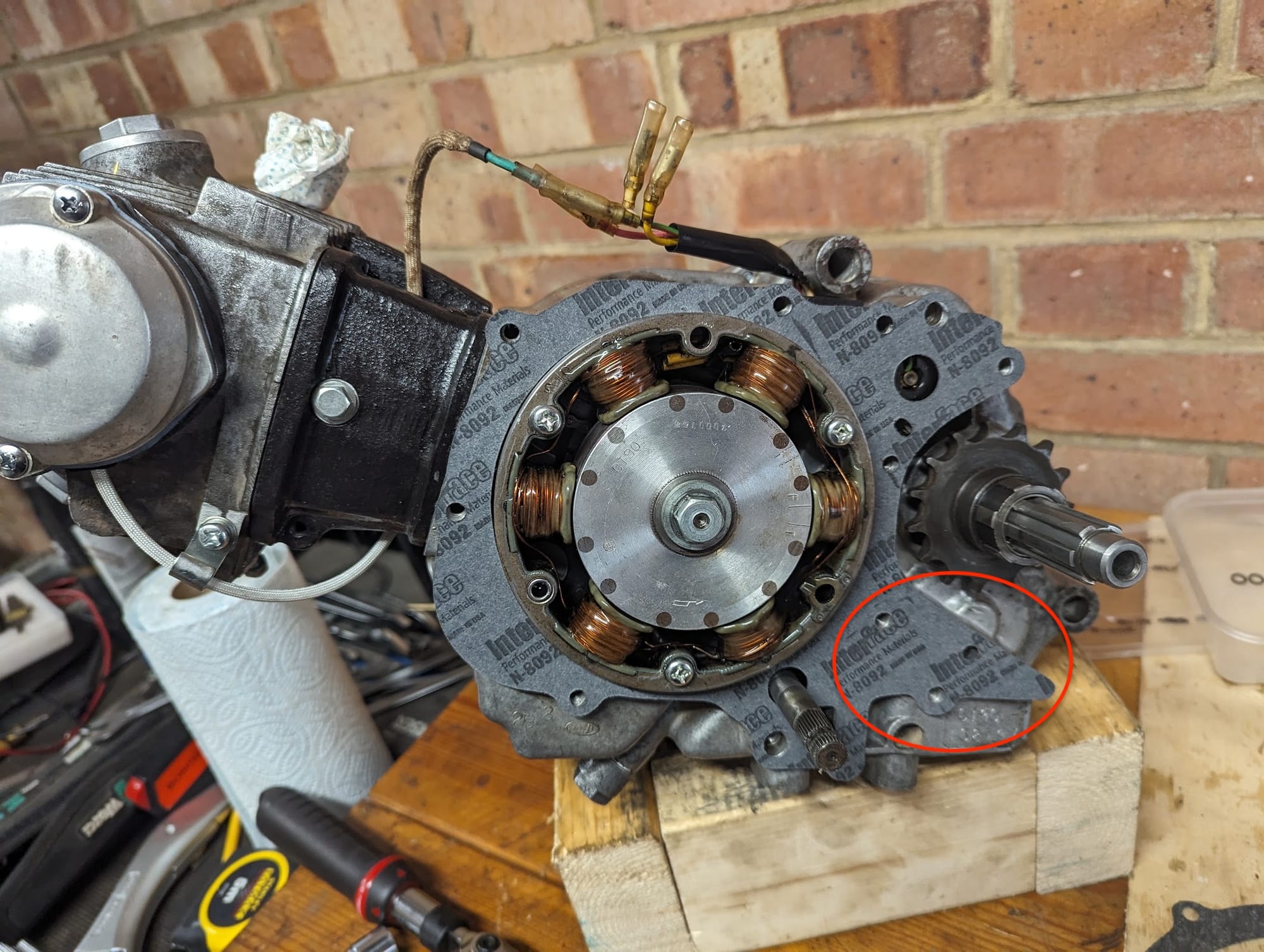

left: correct gasket / right: the incorrect C90 gasket next to the correct CT90 version